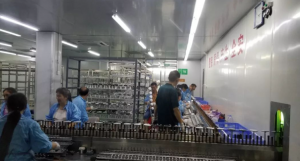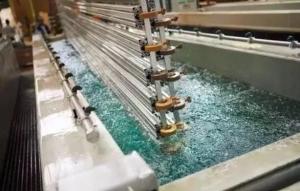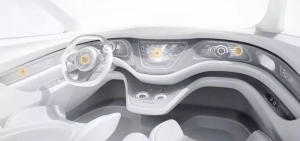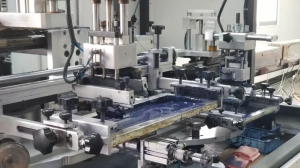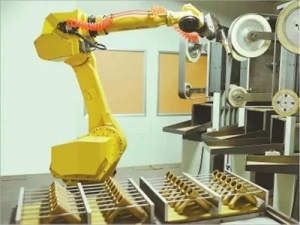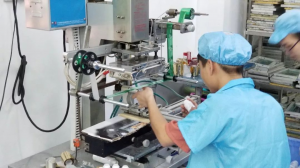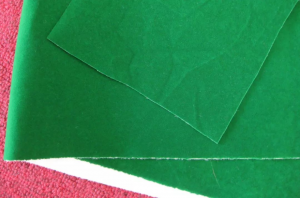The surface treatment process of cosmetic packaging materials is the result of effective integration of colors, coatings, processes, equipment, etc. Different processes create different effects of finished packaging materials. This article is edited by shanghai rainbow package, let us quickly browse 23 surface treatment process
一. Spraying process
1. Spraying is the most common surface treatment, whether it is plastic or hardware. Spraying generally includes oil spraying, powder spraying, etc., and the common one is oil spraying. The sprayed coating is commonly known as paint, and the coating is composed of resins, pigments, solvents, and other additives. Plastic spraying generally has two layers of paint, the color on the surface is called topcoat, and the most transparent layer on the surface is called protective paint.
2. Introduction of spraying process:
1) Pre-cleaning. Such as electrostatic dust removal.
2) Spray the top coat. The topcoat is generally the color seen on the surface.
3) Dry the finish. It is divided into room temperature natural drying and special oven drying.
4) Cool the finish. Dedicated oven drying requires cooling.
5) Spray protective paint. Protective paint is generally used to protect the topcoat, most of which are clear paints.
6) Curing the protective paint.
7) QC inspection. Check if the requirements are met.
3. Rubber oil
Rubber oil, also known as elastic paint, feel paint, rubber oil is a two-component high elastic hand paint, the product sprayed with this paint has a special soft touch and high elastic surface feel. The disadvantage of rubber oil is high cost, general durability, and easy to fall off after a long time. Rubber oil is widely used in communication products, audio-visual products, MP3, mobile phone casings, decorations, leisure and entertainment products, game consoles, beauty equipment, etc.
4. UV paint
1) UV paint is the English abbreviation of Ultra-VioletRay. The commonly used UV wavelength range is 200-450nm. UV paint can only be cured when exposed to ultraviolet light.
2) The characteristics of UV paint: transparent and bright, high hardness, fast fixing speed, high production efficiency, protective topcoat, hardening and brightening the surface.
二、 the water plating process
1. Water plating is an electrochemical process. The popular understanding is to immerse the product parts that need electroplating in the electrolyte, and then pass the current to make the metal deposited on the surface of the parts to form a uniform, dense and binding force. A good method for surface finishing of metal layers.
2. Materials suitable for water plating: the most common is ABS, preferably electroplating grade ABS, other common plastics such as PP, PC, PE, etc. are difficult to water plating.
Common surface colors: Gold, Silver, Black, Gunmetal.
Common electroplating effects: high gloss, matt, matte, mixed, etc.
三、Vacuum plating process
1. Vacuum plating is a kind of electroplating, which is a method of coating a thin metal coating on the surface of the product in a high vacuum equipment.
2. The process flow of vacuum plating: surface cleaning – antistatic – spray primer – baking primer – vacuum coating – spray top coat – baking top coat – quality inspection – packaging.
3. Advantages and disadvantages of vacuum plating:
1) There are many plastic materials that can be electroplated.
2) Color plating can be done, with rich colors.
3) The plastic properties are not changed during electroplating, and local electroplating is convenient.
4) No waste liquid, environmental protection.
5) Can do non-conductive vacuum plating.
6) The electroplating effect is brighter and brighter than water plating.
7) The productivity of vacuum plating is higher than that of water plating.
Its shortcomings are as follows:
1) The defective rate of vacuum plating is higher than that of water plating.
2) The price of vacuum plating is higher than that of water plating.
3) The surface of vacuum coating is not wear-resistant and needs to be protected by UV, and water plating generally does not need UV.
四、IMD/In-Mold Decoration Technology
1. The Chinese name of IMD: In-mold decoration technology, also known as coating-free technology. English name: In-MoldDecoration, IMD is an internationally popular surface decoration technology, surface hardening transparent film, middle printing pattern layer, back injection layer, ink middle, which can make the product resistant to friction, prevent the surface from being scratched, and maintain the color for a long time. Bright and not easy to fade.
IMD in-mold decoration is a relatively new automated production process. Compared with the traditional process, IMD can reduce the production steps and reduce the number of disassembled components, so it can quickly produce and save time and cost. It also has the advantages of improving quality and increasing images. Complexity and improving product durability advantages, IMD) is currently the most efficient method, it is applied to the surface of the film by printing, high pressure forming, die cutting, and finally combined with plastic to form, eliminating secondary operation procedures and labor hours , especially when the printing and painting process such as backlight, multi-surface, imitation metal, hairline processing, logical light pattern, rib interference, etc. cannot be handled, it is the time to use the IMD process.
IMD in-mold decoration can replace many traditional processes, such as thermal transfer, spraying, printing, electroplating and other appearance decoration methods. In particular, related products such as multi-color images, backlights, etc. are required.
Of course, it should be specially noted here: not all plastic surface decoration can be replaced by IMD process, and IMD still has material technical bottlenecks (such as the inverse relationship between hardness and stretching, positioning accuracy, profile and bump spacing, draft angle) etc.) For specific products, 3D files should be provided for professional engineers to analyze.
2. IMD includes IML, IMF, IMR
IML: IN MOLDING LABEL (that is, putting the printed and punched decorative sheet into the injection mold, and then injecting the resin into the ink layer on the back of the molded sheet, so that the resin and the sheet are combined into an integrated curing molding technology. Printing → Punching → Inner plastic injection.) (No stretching, small curved surface, used for 2D products);
IMF: IN MOLDING FILM (roughly the same as IML but mainly used for 3D processing on the basis of IML. Printing → molding → punching → inner plastic injection. Note: Most molding is PC vacuum/high pressure molding.) (suitable for high drawing extension products, 3D products);
IMR: IN MOLDING ROLLER (the focus is on the release layer on the rubber compound. PET FILM → printing release agent → printing ink → printing adhesive → inner plastic injection → ink and plastic bonding → after the mold is opened, the rubber material will automatically separate from the ink. Type. Japan is called thermal transfer or thermal transfer. This machine uses the ROLL TOROLL method, and the alignment is operated by a CCD computer. His sheet customization cycle is relatively long, the mold cost is relatively high, and the technology is not exported, only Japan has .) (The film on the surface of the product is removed, leaving only the ink on the surface of the product.);
3. The difference between IML, IMF and IMR (whether a film is left on the surface).
Advantages of IMD products:
1) Scratch resistance, strong corrosion resistance and long service life.
2) Good stereoscopic effect.
3) Dust-proof, moisture-proof and anti-deformation ability.
4) The color can be changed at will, and the pattern can be changed at will.
5) The pattern positioning is accurate.
五、screen printing process
1. Screen printing is screen printing, which is an ancient but widely used printing method.
1) Use a squeegee to apply the ink on the screen.
2) Then use a scraper to draw the ink flat to one side at a fixed angle. At this time, the ink will be printed on the printed object due to penetration according to the pattern when the screen is manufactured, and the printing can be repeated.
3) The printing screen can continue to be used after washing.
2. Screen printing applications: paper printing, plastic printing, wood product printing, glass, ceramic product printing, leather product printing, etc.
六、 Pad printing process
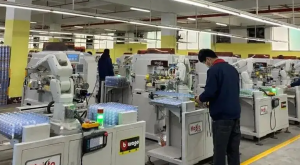
1. Pad printing is one of the special printing methods. It can print text, graphics and images on the surface of irregular shaped objects, and is now becoming an important special printing. For example, the text and patterns on the surface of mobile phones are printed in this way, and the surface printing of many electronic products such as computer keyboards, instruments, and meters are all done by pad printing.
2. The padprinting process is very simple. Steel (or copper, thermoplastic) gravure is used, and a curved pad printing head made of silicone rubber material is used to dip the ink on the gravure onto the surface of the pad printing head, and then You can print text, patterns, etc. by pressing on the surface of the desired object.
3. The difference between pad printing and silk screen printing:
1) Pad printing is suitable for irregular surfaces and curved surfaces, while silk screen printing is suitable for flat surfaces and small curved surfaces.
2) Pad printing needs to be exposed to steel plates, and screen printing is used for screen printing.
3) Pad printing is transfer printing, while silk screen printing is direct missing printing.
4) The mechanical equipment used by the two is quite different.
七、 water transfer process
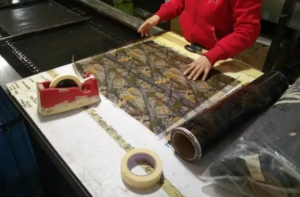
1. Water transfer printing, commonly known as water decals, refers to the transfer of patterns and patterns on the water-soluble film to the substrate through the pressure of water.
2. Comparison of water transfer printing and IML:
IML process: The position of the pattern is accurate, the pattern can be wrapped at will (chamfering or inversion can not be wrapped), the pattern effect is variable, and the color will never fade.
Water transfer printing: the pattern position is not accurate, the pattern wrapping is limited, the pattern effect is limited (the special printing effect cannot be achieved), and the color will fade.
八、thermal transfer process
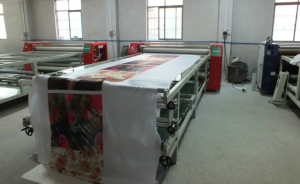
1. Thermal transfer printing is an emerging printing process, which has been introduced from abroad for more than 10 years. The process printing method is divided into two parts: transfer film printing and transfer processing. The transfer film printing adopts dot printing (resolution up to 300dpi), and the pattern is pre-printed on the surface of the film. The printed pattern is rich in layers, bright in color and ever-changing. , small chromatic aberration, good reproducibility, can meet the requirements of pattern designers, and is suitable for mass production; transfer processing through thermal transfer machine one-time processing (heating and pressure) to transfer the exquisite pattern on the transfer film to the product The surface, after molding, the ink layer and the surface of the product are integrated, which is realistic and beautiful, which greatly improves the grade of the product. However, due to the high technical content of this process, many materials need to be imported.
2. The thermal transfer printing process is applied to the surface of various ABS, PP, plastic, wood, coated metal and other products. The thermal transfer film can be designed and produced according to the customer’s requirements, and the pattern can be transferred to the surface of the workpiece by hot pressing to improve the product quality. Thermal transfer process is widely used in plastics, cosmetics, toys, electrical appliances, building materials, gifts, food packaging, stationery and other industries.
九、sublimation dye printing
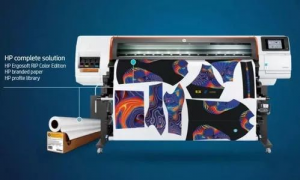
1. This method is specially created for the surface decoration of prefabricated products and three-dimensional plastic products. This method cannot provide scratch resistance and other protective effects on the surface of the product. On the contrary, it can provide printing quality that is not easy to fade, and even if it is scratched, you can still see beautiful colors. Unlike screen printing or varnishing, this method delivers much higher color saturation than other coloring methods.
2. The dye used in sublimation can penetrate into the surface of the material about 20-30 microns, so even if the surface is brushed or scratched, its color can still be maintained very bright. This method is also widely used in various products, including SONY’s notebook computer VAIO. This computer is used in this way to make surface treatments of different colors and patterns to make this product more distinctive and personal.
十、 paint process
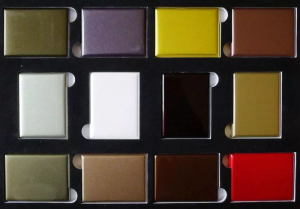
1. Baking paint means that after painting or brushing, the workpiece is not allowed to cure naturally, but the workpiece is sent to the paint baking room, and the paint layer is cured by electric heating or far-infrared heating.
2. The difference between baking paint and ordinary paint: After baking paint, the tightness of the paint layer is stronger, it is not easy to fall off, and the paint film is uniform and the color is full.
3. The piano lacquer process is a kind of baking lacquer process. Its process is very complicated. First, it is necessary to apply putty on the wooden board as the bottom layer of the spray paint; after leveling the putty, wait for the putty to dry, polish and smooth it; then repeat the process. Spray the primer 3-5 times, after each spraying, polish with water sandpaper and abrasive cloth; finally, spray 1-3 times the bright topcoat, and then use high temperature baking to cure the paint layer, the primer is The thickness of the cured transparent paint is about 0.5mm-1.5mm, even if the temperature of the iron cup is 60-80 degrees, there will be no problem on its surface!
十一、Oxidation process
1. Oxidation refers to the chemical reaction between an object and the oxygen in the air, called oxidation reaction, which is a natural phenomenon. The oxidation described here refers to the surface treatment process of hardware products.
2. Process flow: alkaline washing – washing – bleaching – washing – activation – washing – aluminum oxidation – washing – dyeing – washing – sealing – washing – drying – quality inspection – storage.
3. The role of oxidation: protective, decorative, coloring, insulating, improving the bonding force with organic coatings, and improving the bonding force with inorganic coating layers.
4. Secondary oxidation: By blocking or deoxidizing the surface of the product, the product is oxidized twice, which is called secondary oxidation.
1) Different colors appear on the same product. The two colors can be close or different.
2) The production of the protruding LOGO on the surface of the product. The protruding LOGO on the surface of the product can be stamped and formed, or obtained by secondary oxidation.
十二、 Mechanical drawing process
1. Mechanical wire drawing is a process of rubbing traces on the surface of the product by mechanical processing. There are several types of mechanical wire drawing, such as straight grain, random grain, thread, corrugation, and sun grain.
2. Materials suitable for mechanical drawing:
1) Mechanical wire drawing belongs to the surface treatment process of hardware products.
2) The plastic products cannot be directly mechanically drawn. The plastic products after water plating can also achieve the texture by mechanical drawing, but the coating should not be too thin, otherwise it will be easily broken.
3) Among the metal materials, the most common types of mechanical drawing are aluminum and stainless steel. Since the surface hardness and strength of aluminum are lower than those of stainless steel, the mechanical drawing effect is better than that of stainless steel.
4) Other hardware products.
十三、laser engraving process
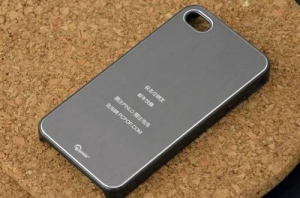
1. Laser engraving, also called laser engraving or laser marking, is a process of surface treatment using optical principles.
2. Application places of laser engraving: laser engraving is suitable for almost all materials, hardware and plastic are commonly used fields. In addition, there are bamboo and wood products, plexiglass, metal plate, glass, stone, crystal, Corian, paper, two-color plate, alumina, leather, plastic, epoxy resin, polyester resin, spray metal, etc.
3. The difference between laser wire drawing and mechanical wire drawing:
1) Mechanical drawing is to make lines by mechanical processing, while laser drawing is to burn out the lines through the light energy of laser.
2) Relatively speaking, the mechanical drawing lines are not very clear, while the laser drawing lines are clear.
3) The surface of mechanical drawing has five bumps, while the surface of laser drawing has bumps.
十四、 Highlight trimming
High-gloss trimming is to cut a bright beveled edge on the edge of the hardware product by a high-speed CNC machine.
1) It belongs to the surface treatment process of hardware products.
2) Among metal materials, aluminum is the most widely used for high-gloss trimming, because aluminum materials are relatively soft, have excellent cutting performance, and can obtain very bright surface effects.
3) The processing cost is high, and it is generally used for edge cutting of metal parts.
4) Mobile phones, electronic products, and digital products are widely used.
十五、 batch of flowers
1. Batch flower is a method of cutting lines on the surface of the product by machining.
2. Applicable places for batch flowers:
1) It belongs to the surface treatment process of hardware products.
2) Metal nameplate, the product label or company LOGO on it has inclined or straight filigree stripes.
3) There are some obvious deep lines on the surface of hardware products.
十六、 Sandblasting
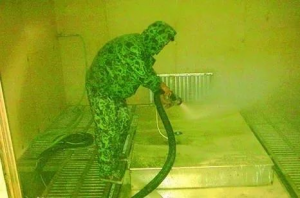
Sandblasting is a process of cleaning and roughening the surface of a substrate by the impact of high-speed sand flow. Using compressed air as the power to form a high-speed jet beam to spray the spray material (copper ore sand, quartz sand, emery, iron sand, Hainan sand) to the surface of the workpiece to be treated at a high speed, so that the appearance or shape of the outer surface of the workpiece surface changes. , Due to the impact and cutting effect of the abrasive on the surface of the workpiece, the surface of the workpiece can obtain a certain degree of cleanliness and different roughness, so that the mechanical properties of the workpiece surface are improved, thus improving the fatigue resistance of the workpiece, increasing its and coating The adhesion between the layers prolongs the durability of the coating film and also facilitates the leveling and decoration of the paint.
2. Sandblasting application range
1) Workpiece coating and pretreatment sandblasting for workpiece bonding can remove all dirt such as rust on the surface of the workpiece, and establish a very important basic schema (that is, the so-called rough surface) on the surface of the workpiece, and can pass Swap abrasives of different particle sizes to achieve different degrees of roughness, which greatly improves the bonding force between the workpiece and paint and plating. Or make the bonding parts more firm and better in quality.
2) Cleaning and polishing of rough surface of castings and workpieces after heat treatment Sandblasting can clean all dirt (such as oxide scale, oil and other residues) on the surface of castings and forgings and workpieces after heat treatment, and polish the surface of workpieces to improve the smoothness of workpieces. It can make the workpiece show a uniform and consistent metal color, so that the appearance of the workpiece is more beautiful and good-looking.
3) Machining parts burr cleaning and surface beautification Sandblasting can clean the tiny burrs on the surface of the workpiece and make the surface of the workpiece smoother, eliminating the harm of burrs and improving the grade of the workpiece. And sandblasting can make small rounded corners at the junction of the workpiece surface, making the workpiece more beautiful and more precise.
4) Improve the mechanical properties of the parts. After sandblasting, the mechanical parts can produce uniform and fine uneven surfaces on the surface of the parts, so that the lubricating oil can be stored, thereby improving the lubrication conditions, reducing noise and improving the service life of the machine.
5) Lighting effect For some special-purpose workpieces, sandblasting can achieve different reflection or matt at will. Such as the grinding of stainless steel workpieces and plastics, the polishing of jade articles, the mattization of the surface of wooden furniture, the pattern of frosted glass surfaces, and the textured processing of cloth surfaces.
十七、 Corrosion
1. Corrosion is corrosion engraving, which refers to the use of tidbits to create patterns or words on the metal surface.
2. Corrosion applications:
1) It belongs to the surface treatment process of hardware products.
2) Decorative surface, can make some finer patterns and characters on the metal surface.
3) Corrosion processing can process tiny holes and grooves.
4) Die etched and bite flowers.
十八、polishing
1. Use other tools or methods to brighten the surface of the workpiece during polishing. The main purpose is to obtain a smooth surface or mirror gloss, and sometimes it is also used to eliminate gloss (matte).
2. The commonly used polishing methods are as follows: mechanical polishing, chemical polishing, electrolytic polishing, ultrasonic polishing, fluid polishing, magnetic grinding and polishing.
3. Polishing application places:
1) Generally speaking, any product whose surface needs to be bright should be polished.
2) Plastic products are not directly polished, but the abrasive tools are polished.
十九、bronzing
1. Hot stamping, commonly known as hot stamping, is a special printing process without ink. The metal plate is heated, foil is applied, and gold text or patterns are embossed on the print. With the rapid development of hot stamping foil and packaging industry, the application of anodized aluminum hot stamping is more and more extensive.
2. The bronzing process uses the principle of hot pressing transfer to transfer the aluminum layer in the anodized aluminum to the surface of the substrate to form a special metal effect. Because the main material used for bronzing is anodized aluminum foil, so bronzing is also called anodized aluminum hot stamping . Anodized aluminum foil is usually composed of multi-layer materials, the substrate is often PE, followed by release coating, color coating, metal coating (aluminum plating) and glue coating.
The basic process of bronzing is in a state of pressure, that is, in the state where the anodized aluminum is pressed by the hot stamping plate and the substrate, the anodized aluminum is heated to melt the hot-melting silicone resin layer and the adhesive agent. The viscosity of the silicone resin becomes smaller, and the viscosity of the special heat-sensitive adhesive increases after being heated and melted, so that the aluminum layer and the anodized aluminum base film are peeled off and transferred to the substrate at the same time. As the pressure is released, the adhesive rapidly cools and solidifies, and the aluminum layer is firmly attached to the substrate, completing a hot stamping process.
3. There are two main functions of bronzing: one is surface decoration, which can increase the added value of the product. The combination of bronzing and embossing and other processing methods can better show the strong decorative effect of the product: the second is to give the product high anti-counterfeiting performance, such as the use of holographic positioning and hot stamping of trademark logos. After the product is hot stamped, the pattern is clear and beautiful, the color is bright and eye-catching, and it is wear-resistant and weather-resistant. At present, the application of bronzing technology on printed cigarette labels accounts for more than 85%. In graphic design, bronzing can play the role of finishing touch and highlighting the theme of the design, especially for the decorative use of trademarks and registered names.
二十、Flocking
Flocking is always considered to be only decorative, but in fact he has many advantages. For example, in jewelry boxes and cosmetics, flocking needs to be used to protect jewelry and cosmetics. It also prevents condensation, so it can be used in car interiors, boats, or air conditioning systems. Two of the most creative uses I can imagine are flannel-covered ceramic tableware, and Miele’s vacuum cleaner.
二十一、Out-of-mold decoration
Out-of-mold decoration is often seen as an extension of injection molding rather than another separate process. Covering the outer layer of the mobile phone with fabric seems to require ingenious craftsmanship to create special effects, which can be quickly and beautifully produced by out-of-mold decoration. What’s more, it can be made directly on the mold without additional manual post-processing process.
二十二、 Self-healing coating
1. This coating has a magical self-healing ability. When there are small scratches or fine lines on the surface, as long as you use a heat source, the surface will repair the scars by itself. The principle is to use the increased fluidity of polymer materials in a high temperature environment, so that after heating, they will flow towards scratches or depressions due to the increase in fluidity to fill them up. This finish provides unprecedented durability of the case.
The protection of some cars is very good, especially when we park the car in the sun, the coating on the surface will start to automatically repair small fine lines or scratches, showing the most perfect surface.
2. Related applications: In addition to the protection of body panels, it may be applied to building surfaces in the future?
二十三、aterproof coating
1. The traditional waterproof coating must be covered with a layer of film, which is not only unsightly, but also changes the surface characteristics of the object itself. The nano waterproof coating invented by the company P2I uses vacuum sputtering to attach the polymer waterproof coating to the surface of the workpiece in a closed space at room temperature. Since the thickness of this coating is measured in nanometers, it is barely noticeable on the outside. This method is suitable for all kinds of materials and geometric shapes, and even some complex shapes. Objects combining several materials can also be successfully coated with a waterproof layer by P2I.
2. Related applications: This technology can provide waterproof functions for electronic products, clothing, shoes, etc. Including the zippers of clothes and the joints of electronic products can be coated. Others, including laboratory precision instruments and medical equipment, must also be waterproof. For example, a dropper in a laboratory must have a water-repelling function that prevents liquid from adhering, so as to ensure that the amount of liquid in the experiment is accurate and non-destructive.
Shanghai rainbow industrial co.,ltd provides one-stop solution for cosmetic packaging.If you like our products, you can contact us,
Website:
www.rainbow-pkg.com
Email: Bobby@rainbow-pkg.com
WhatsApp: +008613818823743
Post time: Apr-27-2022


